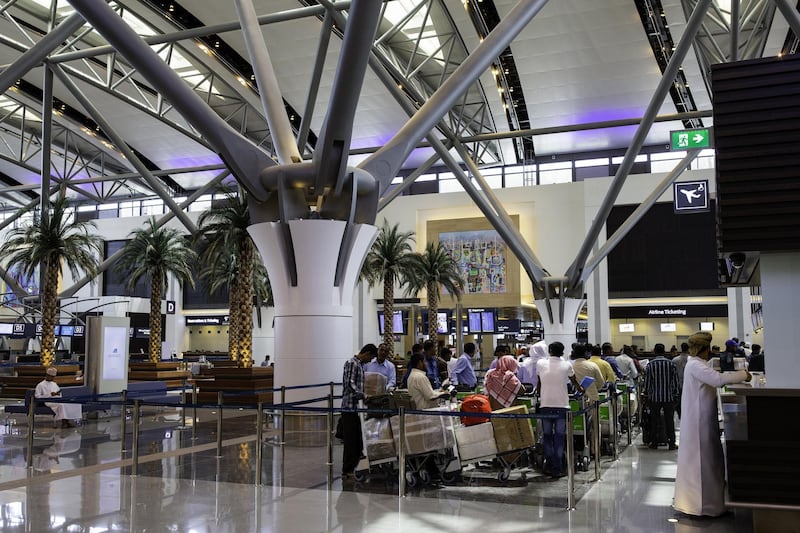Oman expects a 10 per cent rise in passenger traffic through its new terminal at Muscat International Airport to more than 15 million this year and is seeking new airline customers from Asia and Europe.
Next year, annual passenger traffic at the hub is forecast to increase at least 10 per cent year-on-year, driven by growth from domestic carriers Oman Air and Salam Air as they add new routes and receive delivery of more jets, David Wilson, chief operating officer of Oman Airports, told The National.
"The new airport [terminal] in Muscat is a game-changer," Mr Wilson said on the sidelines of an aviation event in Dubai. "We're talking to a host of different airlines, whether they be low-cost carriers within the GCC and India as well as major flag carriers from the Far East, China, Russia and Europe."
The new terminal at Muscat International Airport, which opened in March, received 13.6 million travellers in 2017 and has a capacity to handle 20 million passengers annually. Oman is focusing on developing its aviation sector to diversify the economy away from oil and grow its tourism industry.
________________
Read more:
[ Exclusive: Oman considers IPO of airports company by 2020 amid privatisation drive ]
[ Exclusive: Oman's budget carrier SalamAir aims for profitability by end of 2019 and considers IPO ]
________________
The airport, which has 36 airline customers currently, has seen interest from airlines in China, Russia and Europe to operate Muscat services.
"Oman is still somewhat of an untapped jewel in terms of people knowing more about the country," Mr Wilson said. "It's inevitable in the next few months and years that there will be more joint marketing campaigns."
The airport operator is monitoring challenges in the global economy and regional political instability, but is optimistic about growing its passenger traffic as the country ramps up tourism marketing campaigns to attract more leisure and business travelers.
"Can we in this current macroeconomic and political landscape still grow our passenger traffic numbers? Yes, 100 per cent," Mr Wilson said.
A 10 per cent average annual growth rate in visitors per year "will continue, if not increase", on the back of the national airline's expansion, new hotels opening and a business convention centre scheduled for completion next year, he said.
Oman Air is considering a wide-body orders of either Boeing 787 Dreamliner or Airbus A350 to replace A330 in its fleet. Budget carrier Salam Air is studying 20 new destinations, including points in East Africa, for the next phase of its network expansion by 2020.
Oman Airports expects to turn a "decent" profit in 2018, as it maximises revenues from operations such as food and beverages and tightens cost, Mr Wilson said.
"Oman as a destination is ripe now for picking: There’s been a huge investment in airport infrastructure and in new hotels in Muscat and Salalah," he said. "I think there are big opportunities."
Dubai International Airport, the world's busiest hub by international traffic, expects more than 90 million passengers this year, up from 88.2m in 2017, Paul Griffiths, chief executive of operator Dubai Airports, said at an aviation conference last week. The hub is home to long-haul airline Emirates and sister budget company flydubai.







